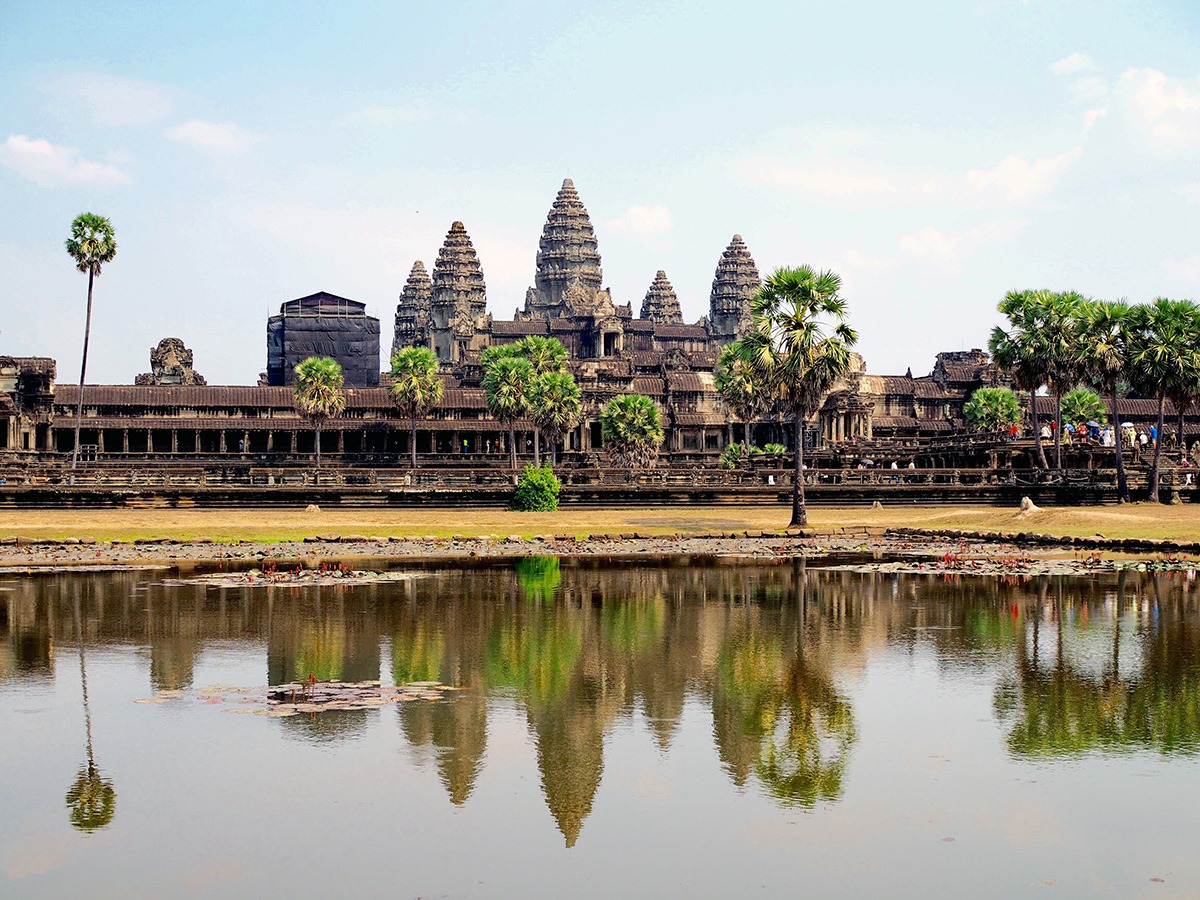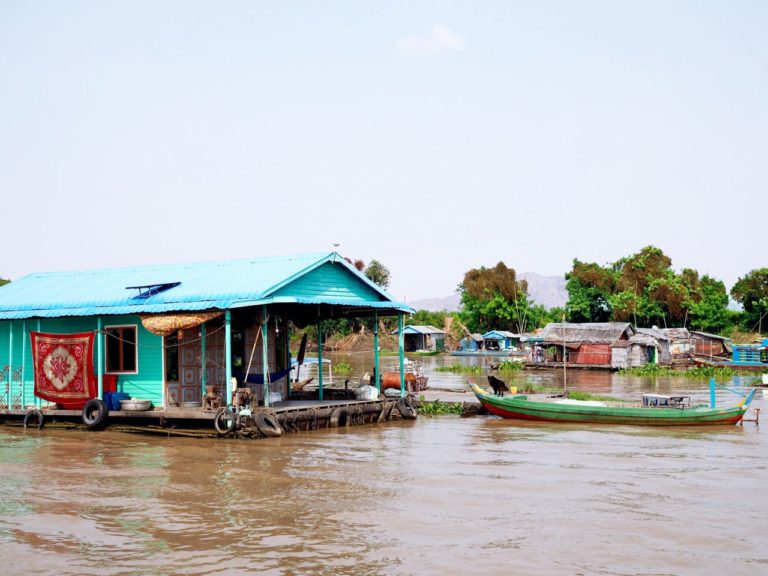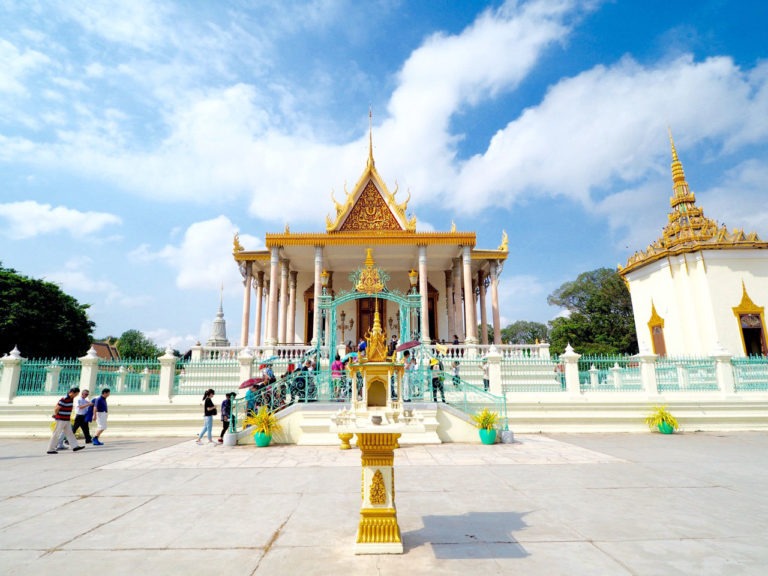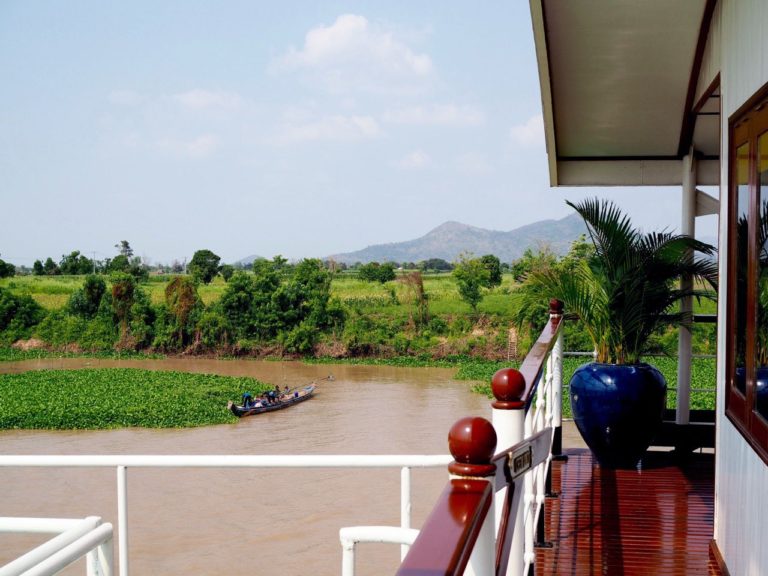The most stunning Angkor Wat temples to visit
As the velvety sunrise bathes Angkor Wat temples in a golden glow, a sense of enchantment envelops the ancient temples. At this early hour, only a handful of intrepid explorers and the lively rhesus macaques disturb the serene stillness, allowing for a magical welcome to this awe-inspiring site. In these solitary moments, the sheer magnitude and intricacy of Angkor Wat leave me momentarily speechless—a rarity for someone who usually finds words effortlessly.
Angkor Wat Temples offer a timeless odyssey through Cambodia’s rich cultural history. From the captivating sunrise to the guided exploration of intricate bas-reliefs, and the sheer diversity of temple highlights, every moment within this UNESCO World Heritage site is a step back in time. As we navigate through the hallowed grounds, we connect with the spiritual and artistic legacy of the Khmer Empire, leaving us with a profound appreciation for the enduring charm of Angkor Wat.
+
cambodia travel tips
The benefits of hiring a guide
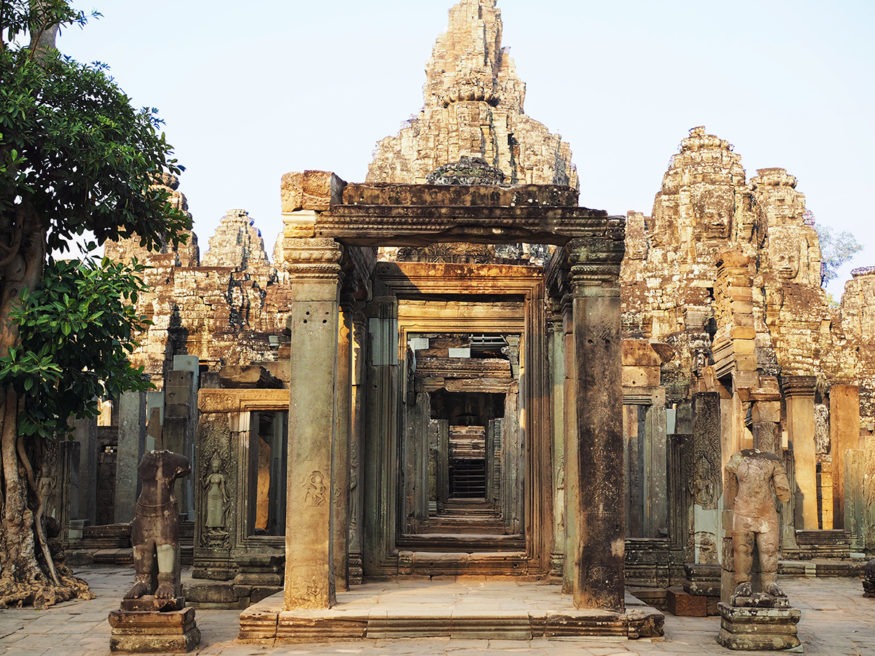
My knowledgeable guide, Te, skillfully unravels the history and legends of the Khmer Empire from the 12th century. Together, we delve into the subtleties of the Buddhist and Hindu bas-reliefs adorning the many temples that make up this UNESCO World Heritage site. Despite the vastness of the complex, Te’s insights provide a meaningful glimpse into the rich cultural tapestry woven by the Khmer civilization.
Inded, opting for a guided visit of the Angkor temples is a good idea for a multitude of reasons.
- Historical and cultural insights: Angkor Wat is a complex archaeological site with a rich history. A knowledgeable guide can provide detailed insights into the historical and cultural significance of the temples, helping you appreciate the intricacies of Khmer civilization.
- Efficient exploration: The Angkor Archaeological Park covers a large area with numerous temples. A guide can help you navigate efficiently, ensuring you don’t miss key attractions and helping you make the most of your visit within the available time.
- Respectful exploration: Cambodia has a unique cultural and religious background. A guide can provide valuable information on local customs, traditions, and etiquette, helping you navigate the temples respectfully and ensuring a positive interaction with the local communit
- Access to hidden gems: Guides often know lesser-known but equally fascinating sites that may be missed by independent travelers. This provides you with a more comprehensive understanding of the Angkor complex.
- Navigating challenges: Angkor Wat attracts a large number of tourists, and during peak seasons, it can get crowded. A guide can help you navigate through crowds, ensuring your safety and security during your visit.
- Local recommendations: Guides often share local insights, including recommendations for authentic Cambodian cuisine and cultural experiences. This can add a delightful dimension to your visit beyond the temple exploration.
- Promoting responsible tourism: Guides who are knowledgeable about conservation efforts can help promote responsible tourism practices, ensuring the preservation of this UNESCO World Heritage site for future generations.
Hiring a guide for visiting Angkor Wat is a wise investment that not only enhances your understanding of the historical and cultural aspects but also ensures a more organized, respectful, and enjoyable exploration of this remarkable archaeological wonder.
Temple highlights
Angkor Wat is home to numerous temples, each with its own unique charm and historical significance. While preferences may vary. Navigating through the expansive site, we explore the highlights of Angkor Wat and its neighboring temples.
From the mesmerizing Buddha faces at Bayon to the overgrown greenery at Angkor Thom, each moment is a testament to the grandeur and diversity of Khmer art and spirituality. And while the main temple, Angkor Wat, is the largest religious monument globally, the entire site includes a multitude of other structures.
Bayon
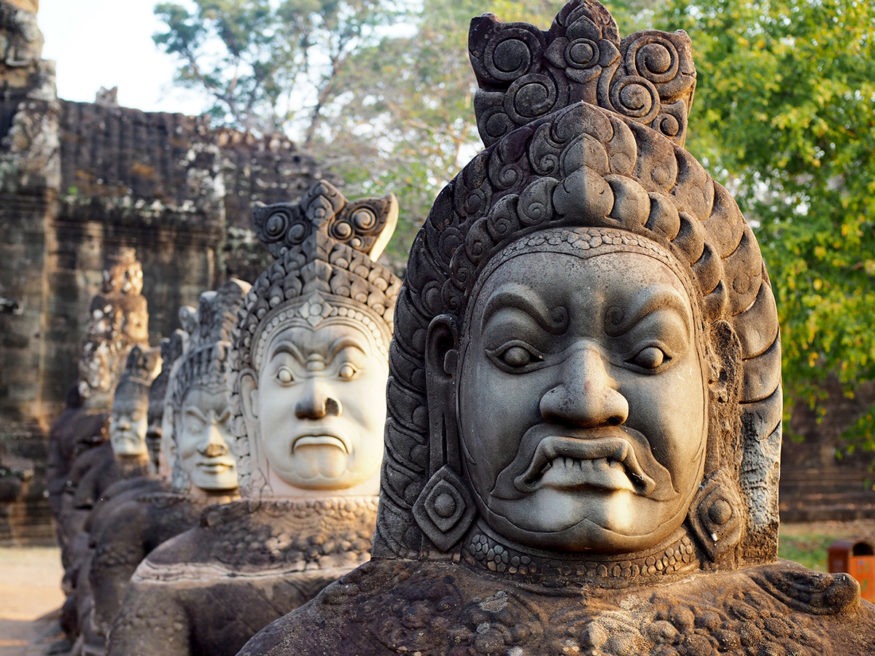
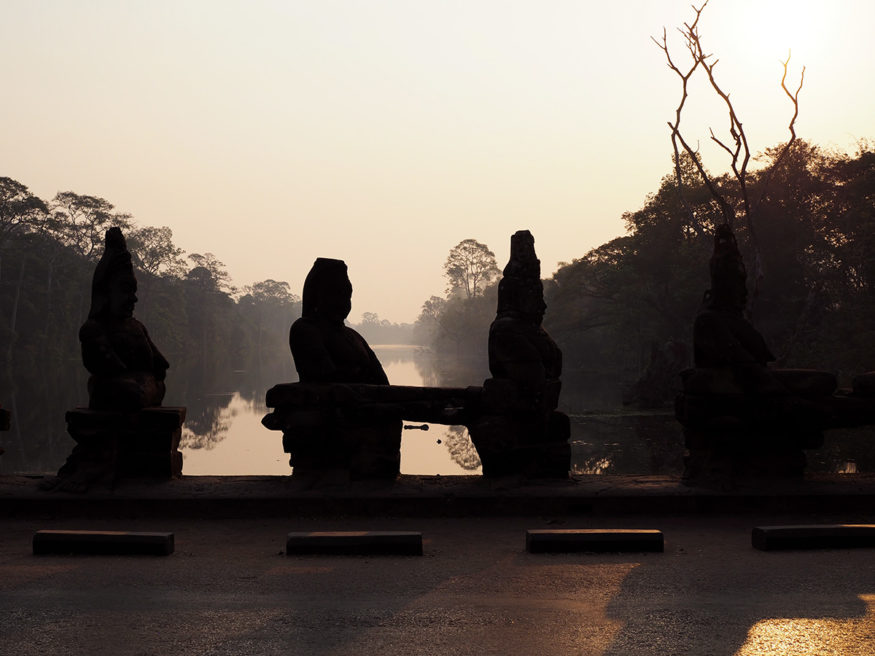
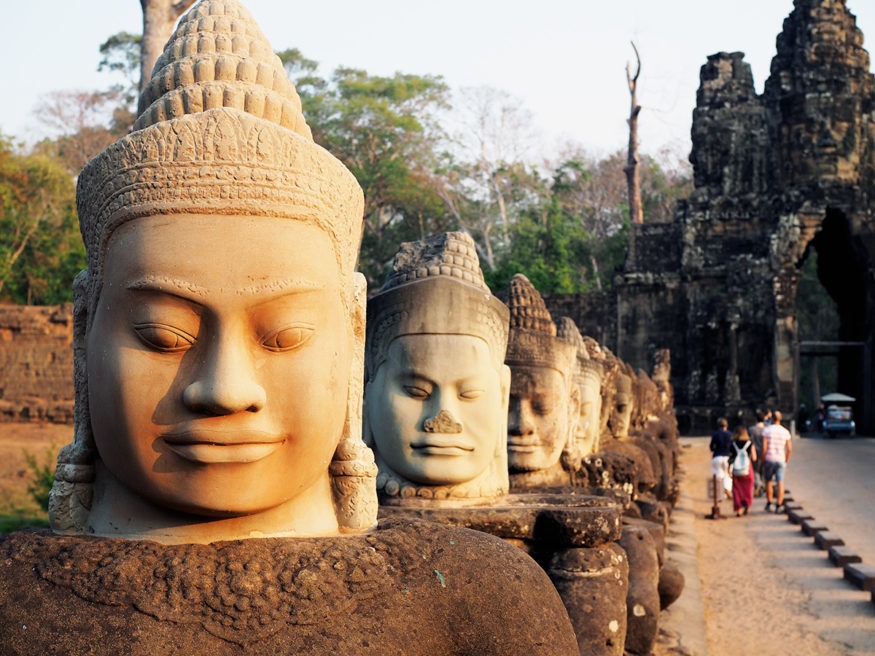
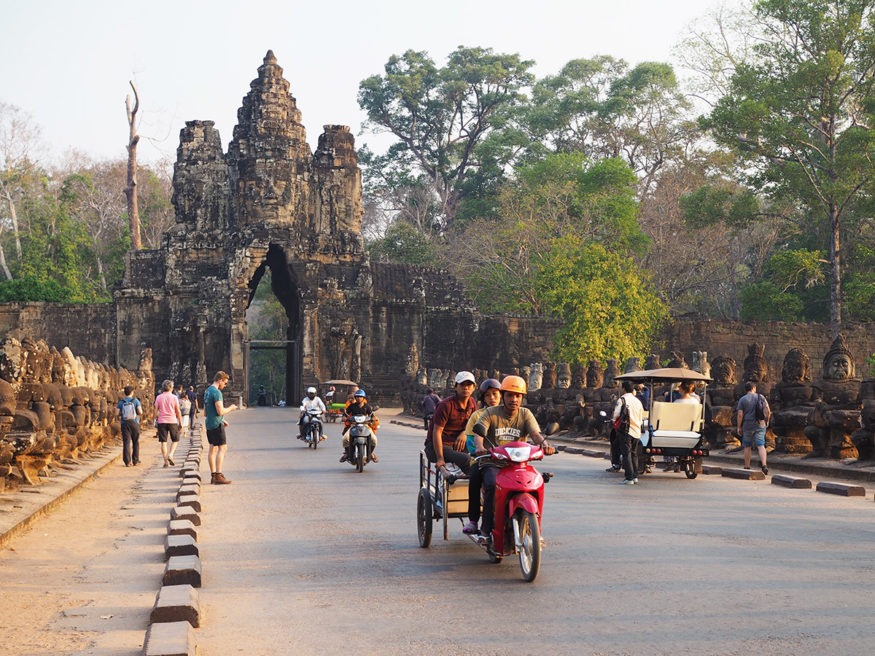
As the velvety sunrise bathes Angkor in a golden glow, a sense of enchantment envelops the ancient temples. At this early hour, only a handful of intrepid explorers and the lively rhesus macaques disturb the serene stillness, allowing for a magical welcome to this awe-inspiring site. In these solitary moments, the sheer magnitude and intricacy of Bayon leave me momentarily speechless—a rarity for someone who usually finds words effortlessly.
Bayon Temple is located within the larger compound of Angkor Thom. Angkor Thom is a massive walled city covering about 9 square kilometers, perfectly square in shape and surrounded by a moat and a high wall, which served as a significant and sprawling capital city during the Khmer Empire. Bayon Temple was one of its central structures.
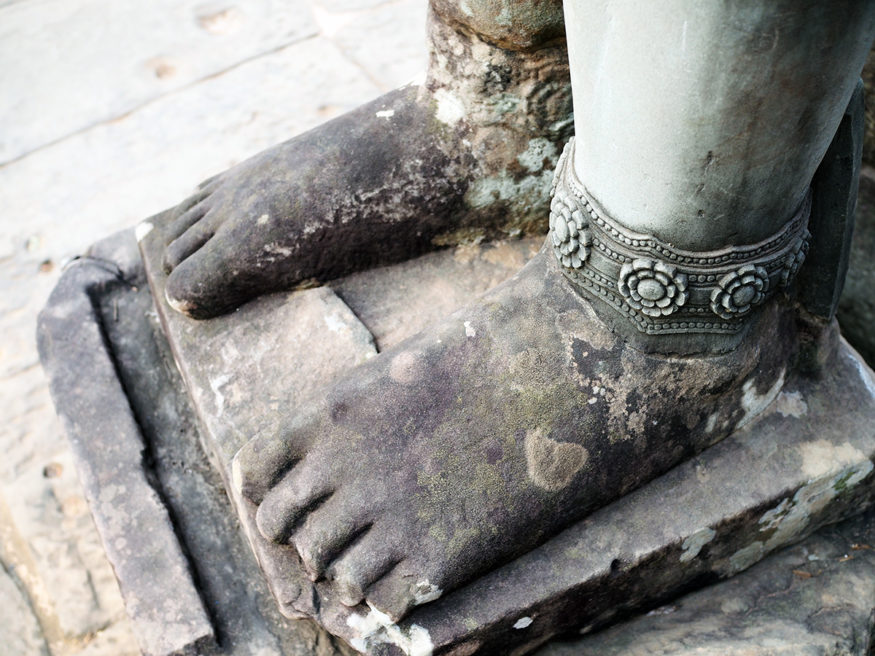
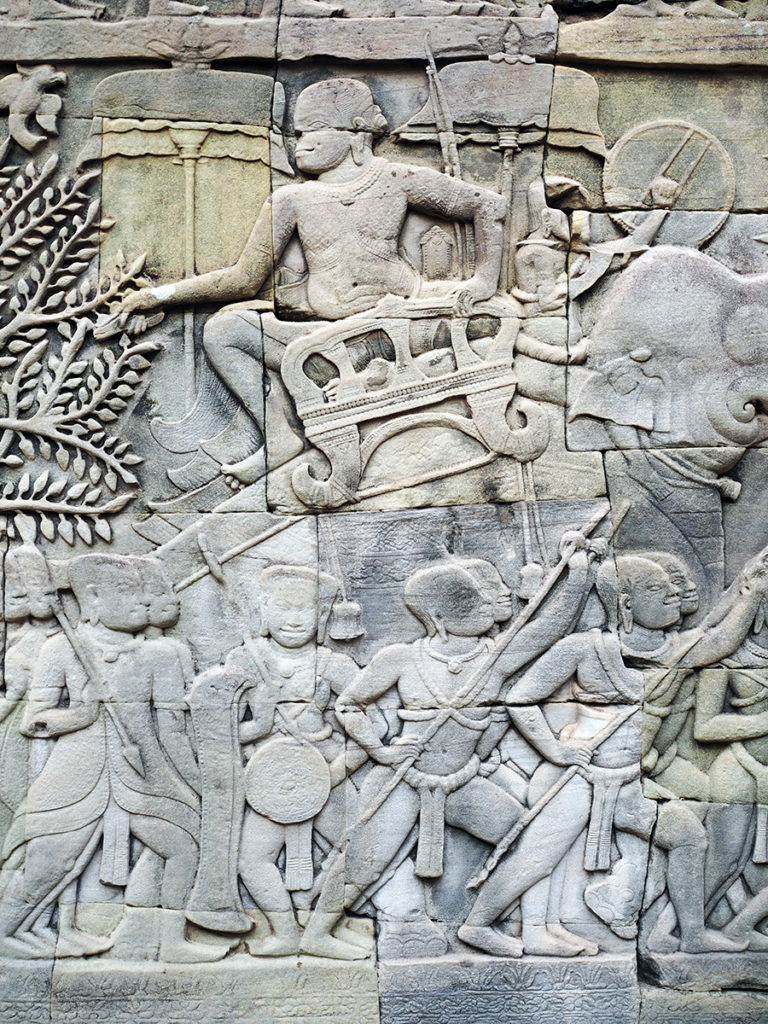
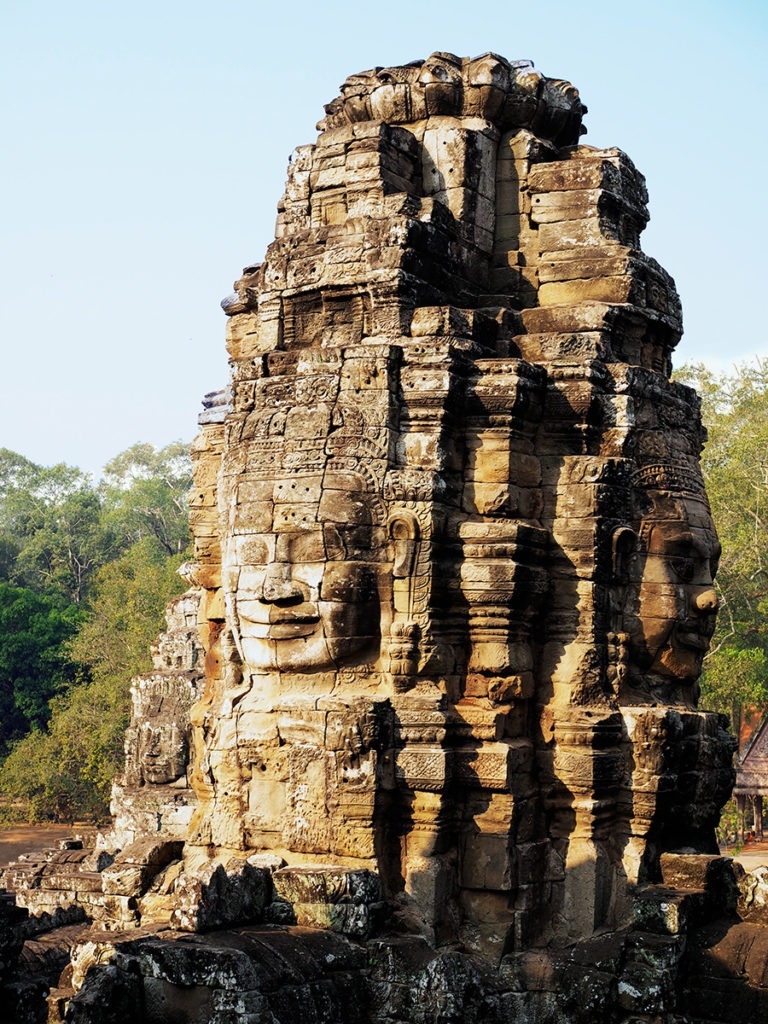
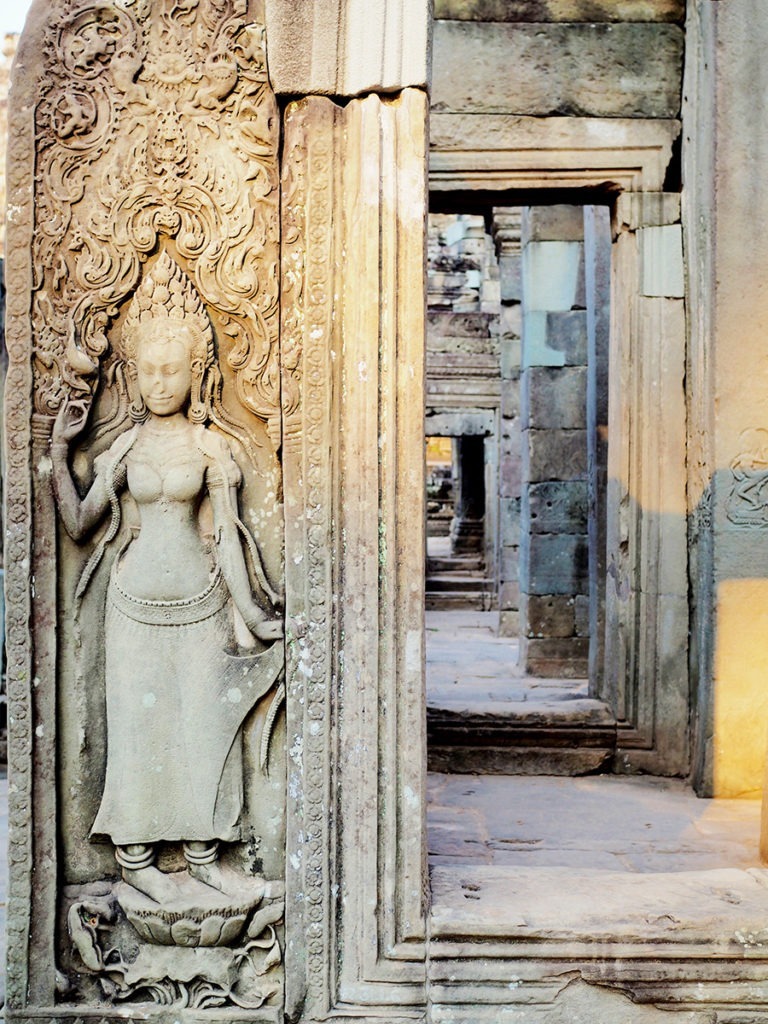
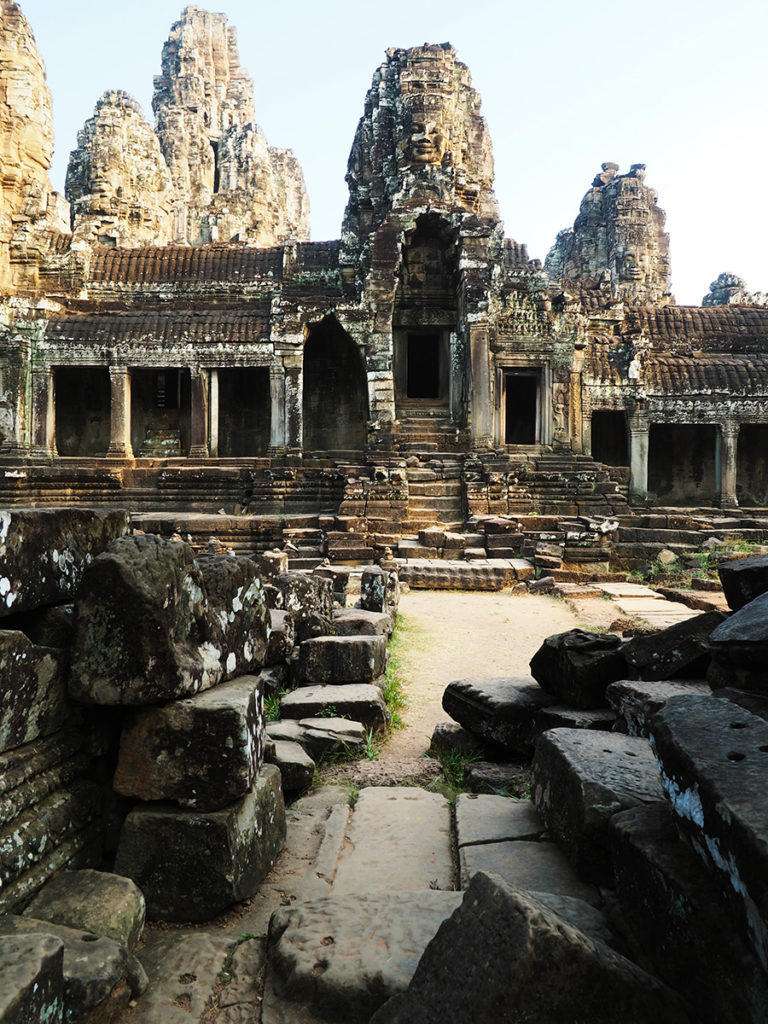
Bayon was constructed in the late 12th and is renowned for the multitude of serene and smiling stone faces that adorn its towers. There are approximately 216 faces, thought to represent bodhisattva Avalokiteshvara or a combination of King Jayavarman VII, who built the temple, and the Buddhist deity. The central sanctuary of Bayon is dedicated to the Buddha, with towers rising in the shape of a quincunx. Each tower is intricately decorated with bas-reliefs and carvings, which provide a detailed narrative of Khmer life during the 12th and 13th centuries.
And unlike many other temples in the Angkor complex, Bayon is primarily a Buddhist temple. King Jayavarman VII was a Mahayana Buddhist, and this influence is evident in the temple’s design and decorations.
+
cambodia travel tips
Angkor Wat
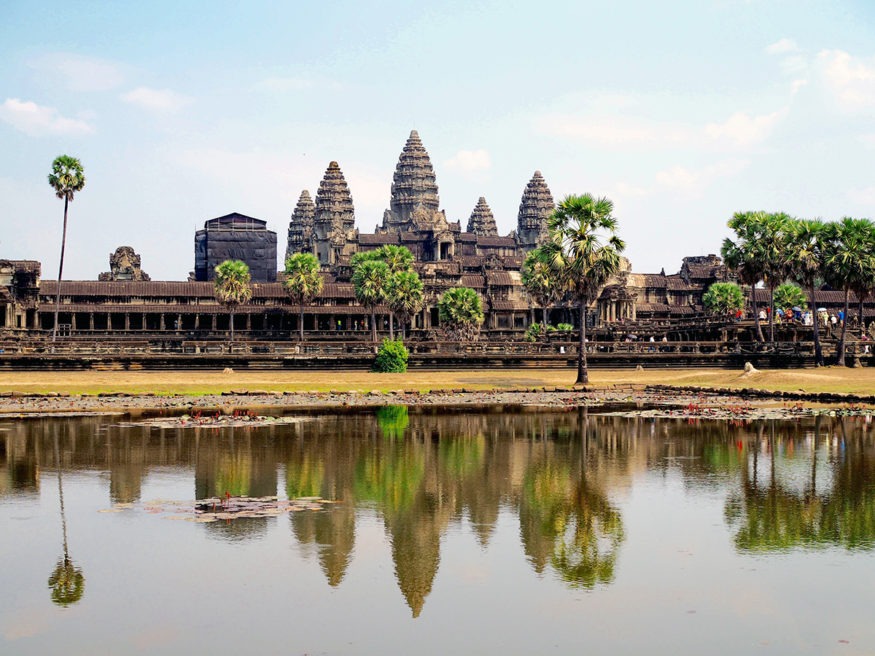
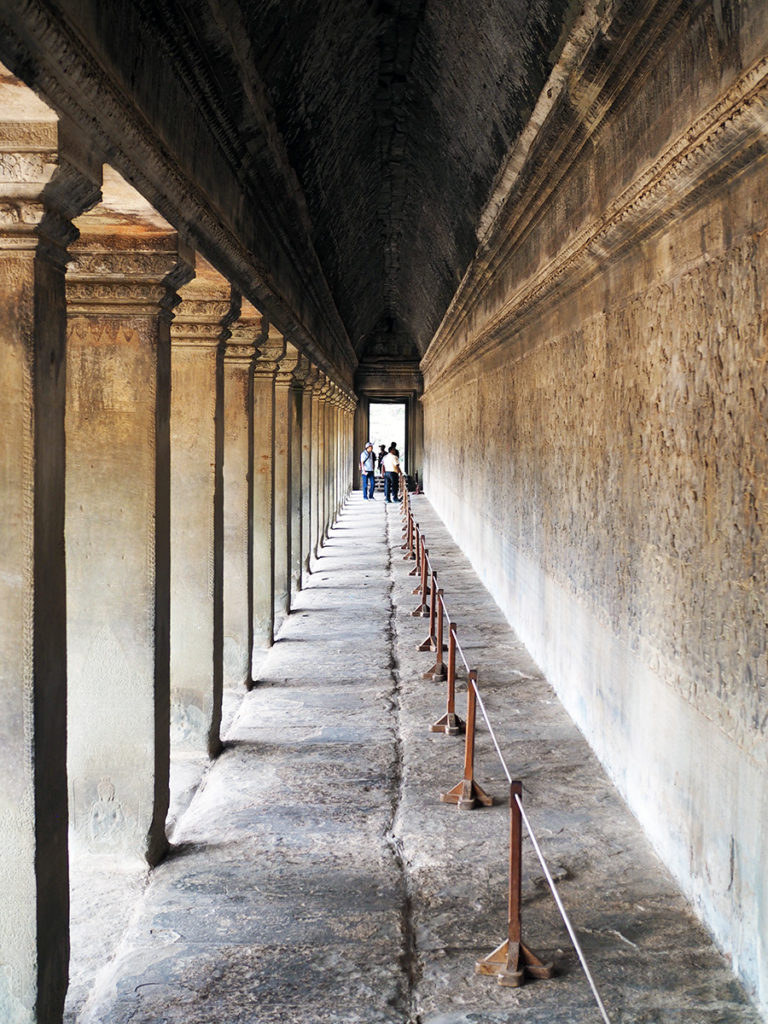
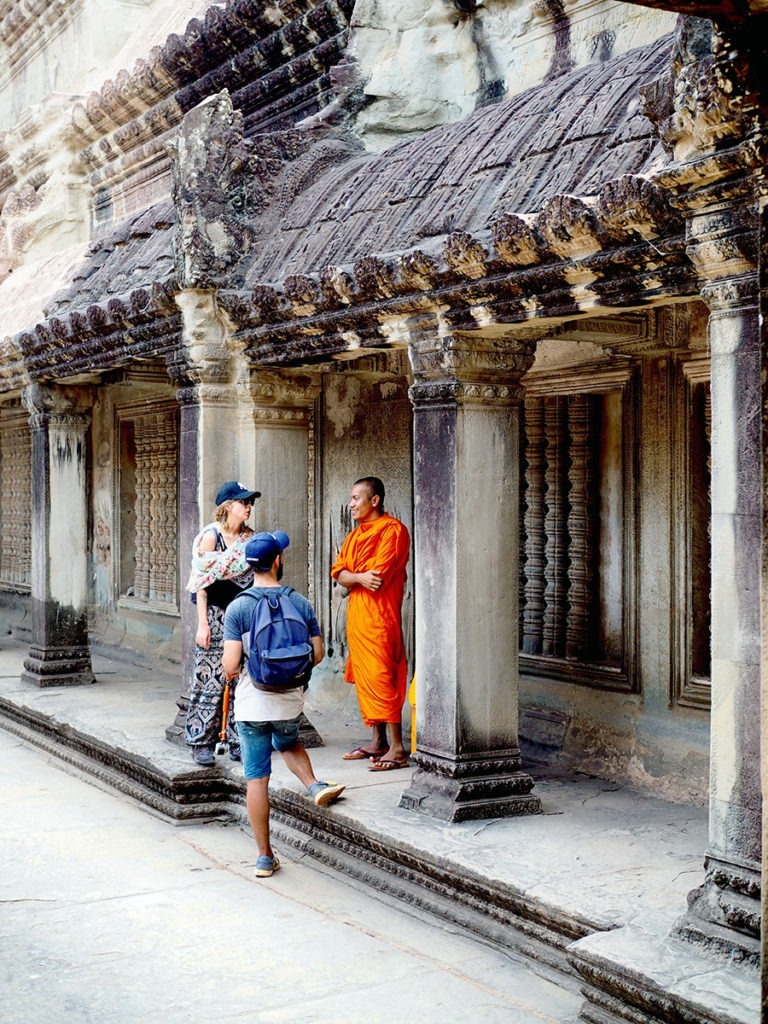
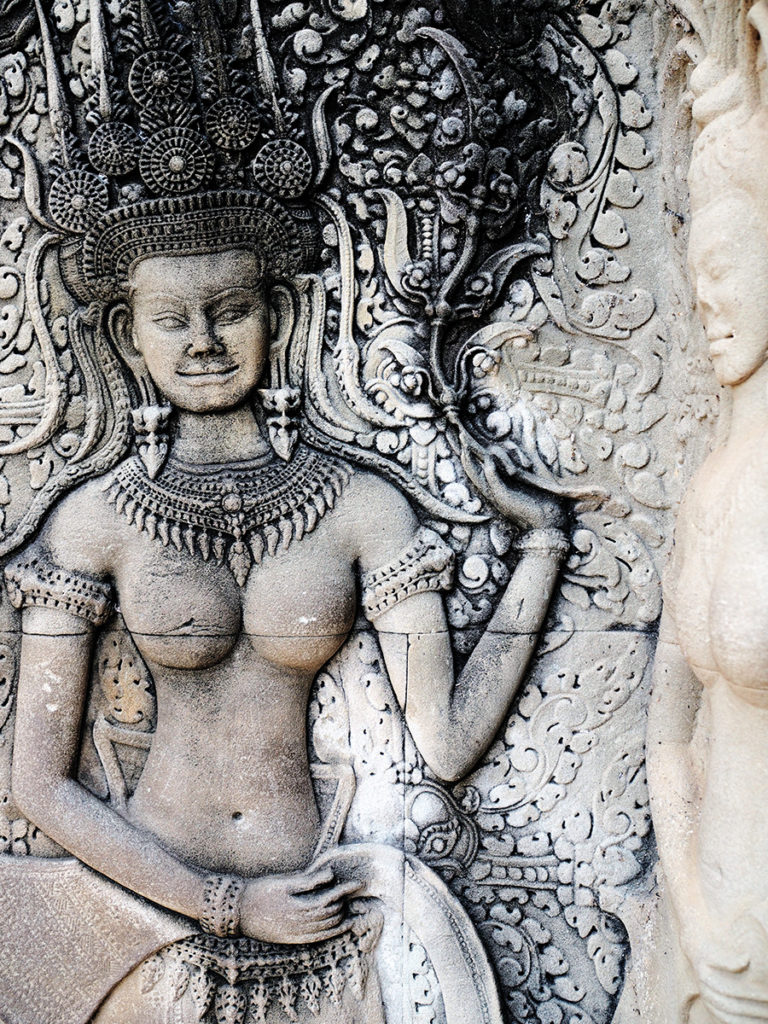
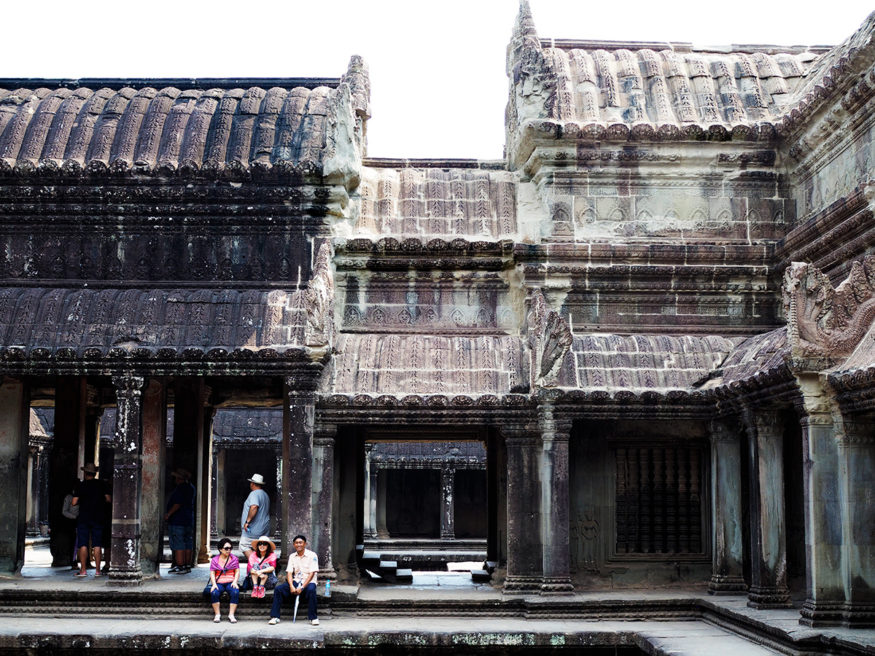
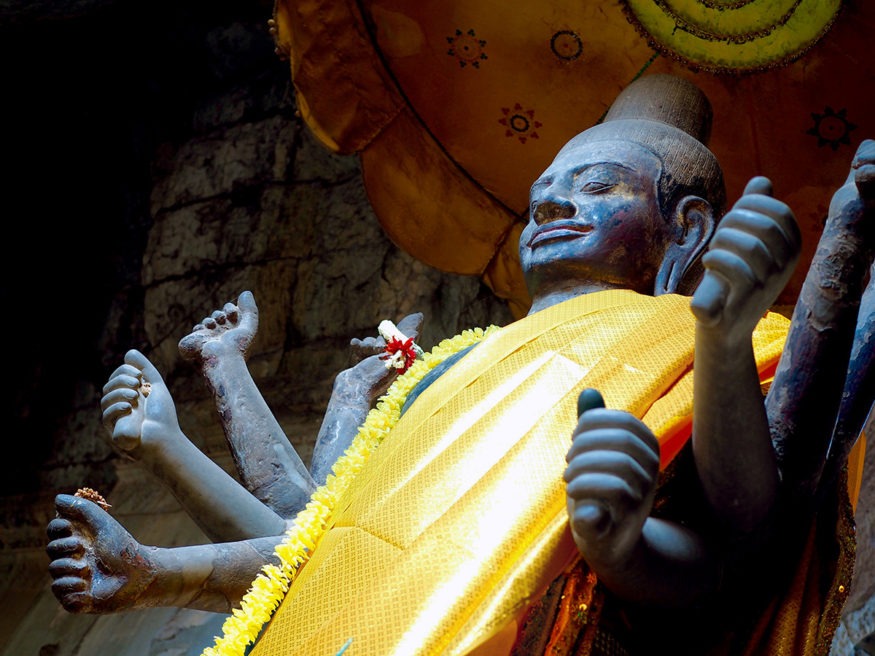
At the heart of Angkor Wat are five distinctive towers, symbolizing Mount Meru, the celestial abode of ancient Hindu deities. Adorned with an 800-meter-long series of bas-reliefs portraying Hindu epics and 2,000 unique nymphs, the temple offers profound insights into Khmer mythology. Over time, Buddhist elements, including stupas and Buddha images, were seamlessly incorporated into its design.
This Khmer architectural masterpiece seamlessly combines temple-mountain design, intricate carvings, and symbolic features, including notably steep staircases best navigated while sitting. Encircled by an impressive moat and accessed by a causeway, Angkor Wat exudes grandeur, isolation, and a spiritual ambiance.
As the heart and soul of Cambodia, Angkor Wat stands as the epicenter of Khmer civilization, proudly featured on the country’s flag. The temple’s westward orientation sparks scholarly speculation, suggesting its role as a tomb, reinforced by the anticlockwise flow of the bas-reliefs—an homage to ancient Hindu funeral practices.
Beyond its symbolic significance, Angkor Wat is a magnet for those seeking breathtaking sunrise and sunset views. Its well-preserved state makes it the crown jewel of Angkor, encouraging visitors to dedicate a half-day to unravel its intricacies and marvel at previously unnoticed details. The temple’s immersive experience rewards those willing to explore its depths.
Ta Prohm
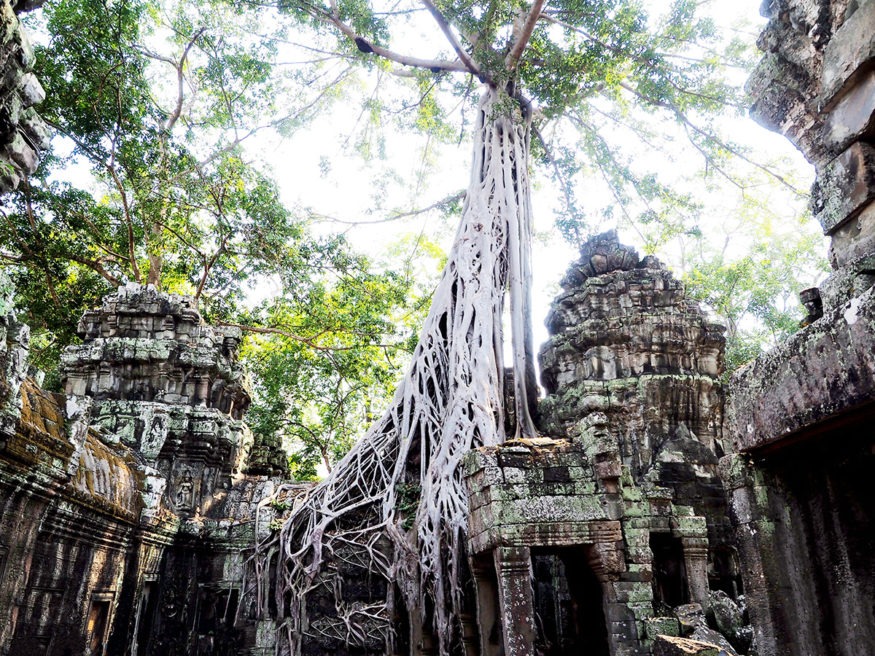
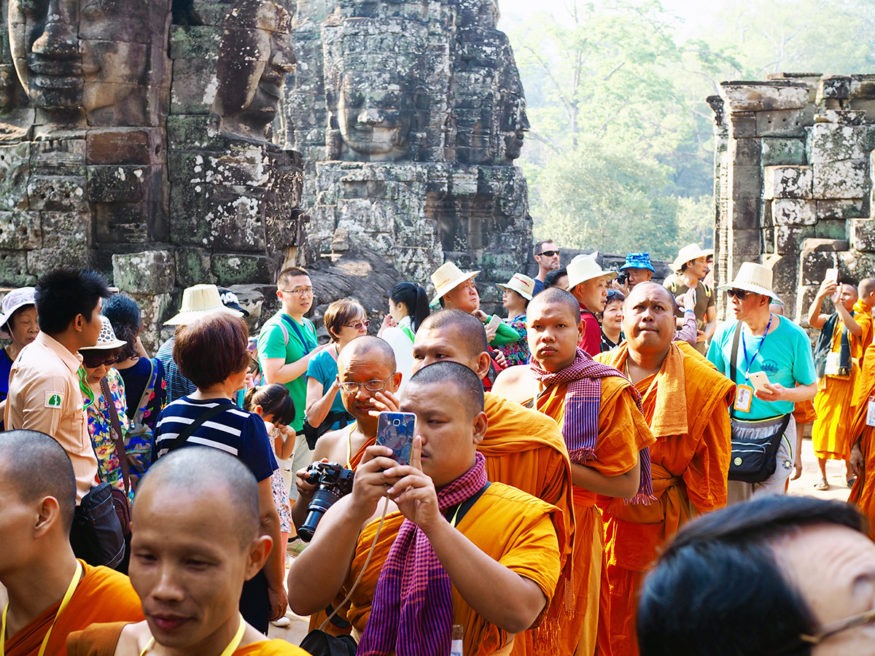
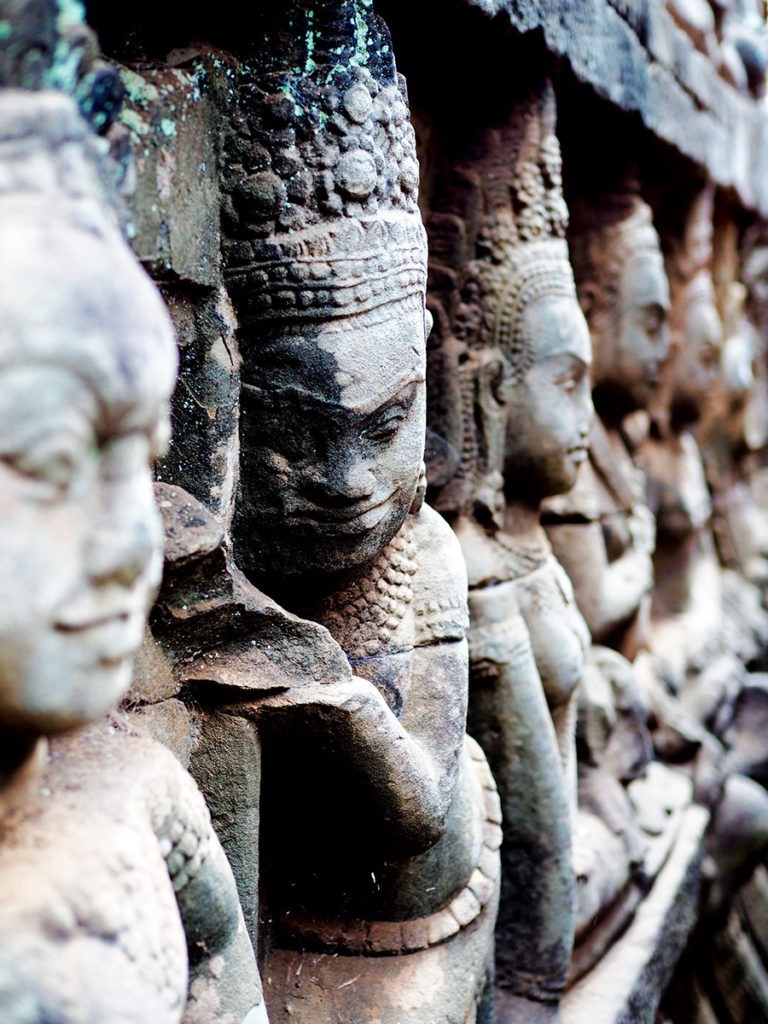
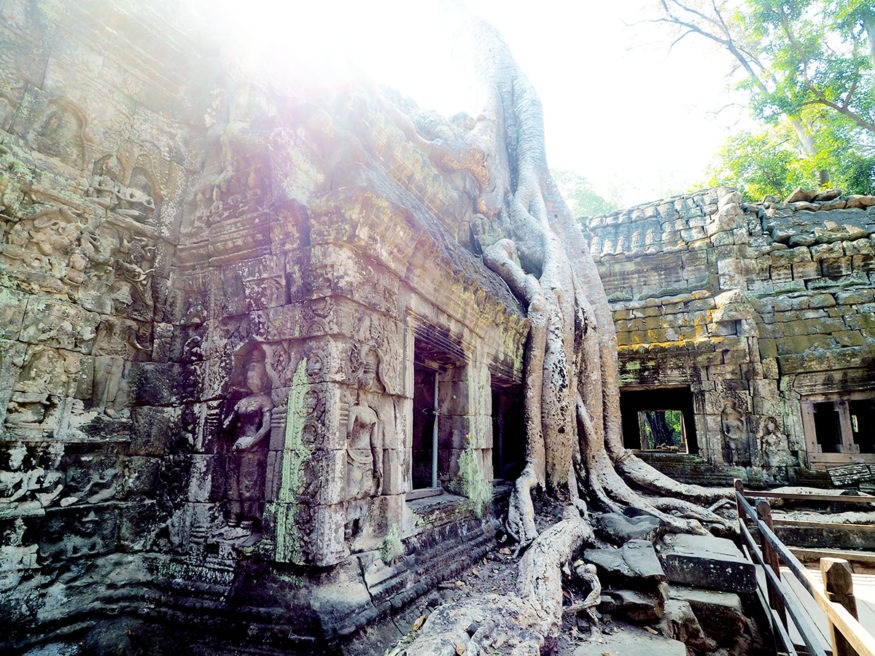
What sets Ta Prohm apart is its unique integration with the surrounding jungle—an enchanting quality that distinguishes it from the other monuments of Angkor. Unlike its counterparts, Ta Prohm remains engulfed by nature, evoking the awe and wonder that greeted European explorers as they first stumbled upon the magnificent ruins centuries ago.
It was built in 1186 as a Monastery of the King, dedicated to the mother of Jayavarman VII. It was a lively place to be, to say the least. The upkeep and attendance of the temple alone demanded the efforts of nearly 80,000 individuals, including over 2,700 officials and 615 dancers.
Enormous silk-cotton and strangler fig trees, with their sprawling roots, have now intertwined with the temple’s stone structures over centuries, creating a mesmerizing tableau of nature reclaiming its dominion. The iconic sight of sunlight casting intricate patterns of light and shadow on the weathered stones has made Ta Prohm a favorite among photographers and tourists alike. Its enchanting allure was further amplified when it served as a prominent filming location for the movie “Tomb Raider.” Yet, beyond its cinematic fame, Ta Prohm holds profound cultural and spiritual significance, symbolizing the impermanence of human endeavors and the enduring power of nature.
The optimal moment to experience the enchantment of Ta Prohm unfolds at dawn, allowing you to immerse yourself in the tranquil solitude of this ancient temple.
+ other Angkor Wat temples worth visiting
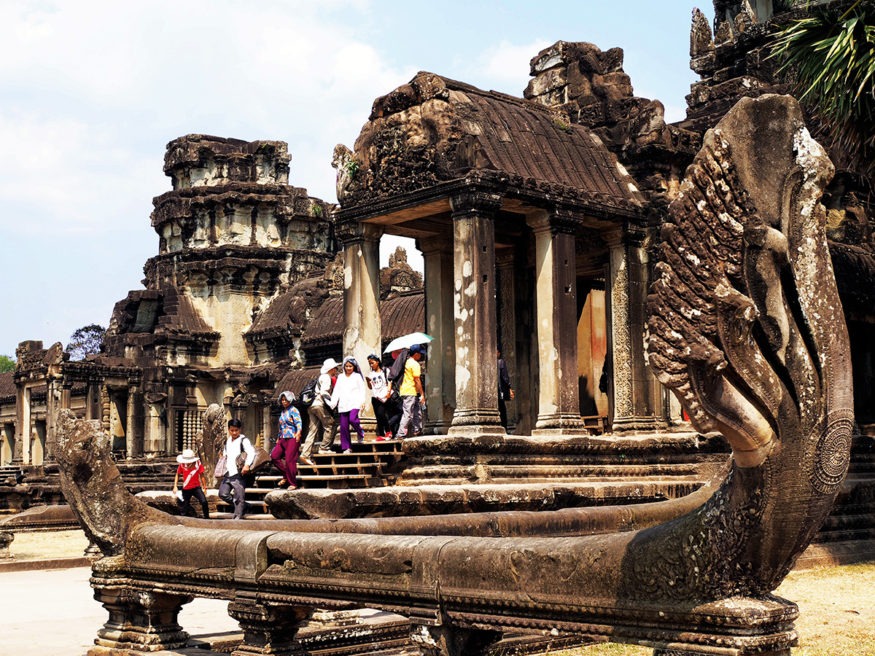
- Beng Mealea
- Koh Ker and Prasat Thom
- Phnom Bakheng
- Banteay Kdei
- Banteay Samré
- Preah Palilay

